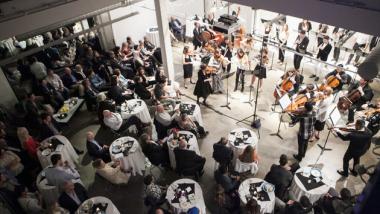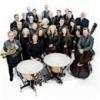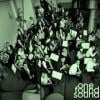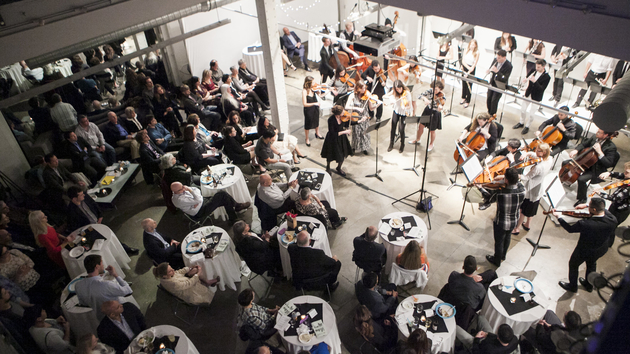
Outside the Heron Arts Center on Saturday evening, the streets of San Francisco were buzzing with the leadup to Sunday’s Folsom Street Fair. In fact, Heron Street itself was cordoned off for an event titled “Mr. S Leather Geared Up Street Party.” Against this backdrop, it might seem discordant or out-of-touch to hold a season-opening chamber orchestra concert. Luckily, One Found Sound provided a fantastic display of the ways that classical music can remain vibrant and relevant amid rapidly changing cultural norms.
Without a conductor or music director, the musicians of One Found Sound bear responsibility for programming decisions. Their sixth season opener was a nice mix of Mozart, Estonian composer Arvo Pärt, and, (after a short break where audience members were encouraged to visit the open bar), Antonín Dvořák.
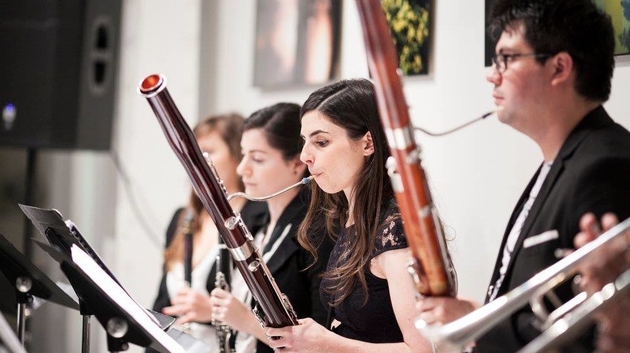
While different in style, each piece fit with the overall theme of “Kinship.” The musicians also rotated positions within their sections, providing chances for them to shine both individually and in supporting roles. Both Mozart’s Overture to The Marriage of Figaro and Dvořák’s Legends were slow to coalesce, but the energy of the players soon became evident. I was reminded of the feeling of performing in an opera pit orchestra while listening to the Mozart overture, particularly in this intimate setting. The group presented a well-balanced sound particularly appropriate to the style. While sparkle and overall tightness of ensemble were missing, the technical facility of the performers was evident, including particularly fine contributions from bassoonist Nate Helgeson.
Various members of the orchestra spoke with the audience between pieces, and Arvo Pärt’s ethereal Fratres was introduced with an example of the overtones of a ringing bell by percussionist Divesh Karamchandani. We were also introduced to the compositional technique called tintinnabuli (from the Latin root for “a bell”). Pärt coined this term to describe a compositional style centered around purity, and the synergy between all sounds being produced.
Fratres was particularly well-suited to the venue and the atmosphere. The clarity of sound in the double bass drones and the wooden, percussive interjections of the claves provided nice contrast to the mystical, hushed sounds of the upper strings. More dynamic contrast would have helped convey a larger musical contour, as the piece lost some of its magic after the overall effect was first achieved.
It was in the finale, Dvořák’s Legends, that the orchestra truly showed what they are capable of. Most likely this piece was new to many of the performers, and as such, it was a brave selection to close the concert. The communication within the ensemble became especially important during the numerous transitions, both between and within each of the 10 short movements. Without a conductor, each individual musician seemed to realize the necessity of being totally engaged, and abrupt changes of tempo and style were handled with agility and grace. Contributions were made from all sections of the ensemble, including fine playing from harpist Meredith Clark. During heavily orchestrated sections, the horns and timpani provided a broad base for the strings and winds, and you felt a refreshing freedom that is rarely present when musical decisions are handed down from a conductor on a podium.
This fully collaborative ensemble has succeeded in challenging the traditional top-down model of orchestral performance. The founders of One Found Sound should be proud of their progress in “breaking down the barriers of the classical music stigma.” This performance highlighted the intimate connections between the performers, and allowed an appreciative, standing-room-only audience to feel personally involved in the experience.

